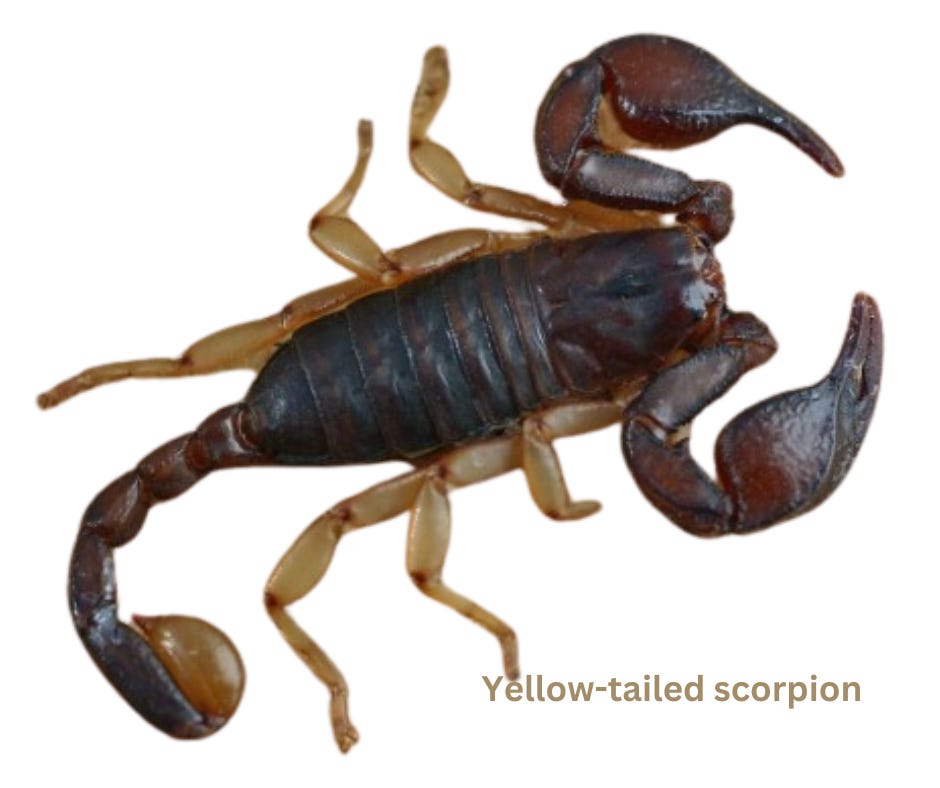by Annette J Beveridge
SCORPIONS have been living here in the UK for several hundred years but most people are simply unaware of their presence.
The small yellow-tailed scorpion, (Euscorpius flavicaudis) grows up to 45mm in length and is predominantly black, with yellow-brown legs and tail. There is a thriving colony in the southeast of England and they are even found occasionally in coastal towns in the south of the country.
They are seldom seen as once a crevice is found, they hide away only emerging to feed or to breed. Favoured prey are woodlice but they will take anything that comes into reach. When food is short, they may even predate each other.
These are assassins in miniature. They have been able to survive sub-zero temperatures so even our coldest winters will not affect them. Importantly, they need only eat four or five times a year.
Read more: The real risks of climate change
Warmer weather will encourage them to emerge and be more active so higher temperatures as a result of climate change may increase the availability of suitable habitat for them to spread.
These were stowaways that may have made their way accidentally to these shores during the reign of Edward VII.
More commonly found in Mediterranean countries, the scorpions do carry venom but for a human, it is likely to only cause an irritation similar to a bee sting. These scorpions are playing a vital role in their ecosystems helping to control the populations of prey and, as yet, there is no data showing a negative impact of their presence.
If you are in an area where they are thriving, go for a walk at night and shine a UV lamp along the wall. These small scorpions will light up like a beacon glowing a fluorescent turquoise even if still hidden in a crevice.





